
Students will rewrite a modern song with lyrics summarizing reasons for exploration and colonization
- Subject:
- Social Studies
- Material Type:
- Activity/Lab
- Author:
- William Allred
- Carrie Robledo
- Date Added:
- 05/18/2021

Students will rewrite a modern song with lyrics summarizing reasons for exploration and colonization
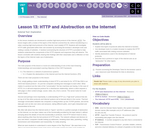
In this lesson students are introduced to another high-level protocol of the Internet, [v HTTP]. The lesson begins with a review of the layers of the Internet covered thus far, before transitioning to a video covering high-level protocols of the Internet, most notably HTTP. Students will investigate HTTP traffic generated within their own browser by accessing the browser’s developer tools and visiting a variety of websites. A handout summarizing the structure of HTTP is provided to help students understand the components of the HTTP requests and responses they will observe. The lesson concludes with students sharing their findings with their classmates and a reflection on how the layers of the Internet make use of abstraction.
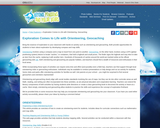
This article provides an overview of orienteering and geocaching as well as suggestions for incorporating these activities into elementary classrooms
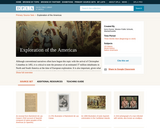
This collection uses primary sources to explore early exploration of the Americas. Digital Public Library of America Primary Source Sets are designed to help students develop their critical thinking skills and draw diverse material from libraries, archives, and museums across the United States. Each set includes an overview, ten to fifteen primary sources, links to related resources, and a teaching guide. These sets were created and reviewed by the teachers on the DPLA's Education Advisory Committee.

Is there liquid water on Mars? By experimenting with water as it changes state and investigating some effects of air pressure, students not only learn core ideas in physical science but can deduce the water situation on Mars by applying those concepts.
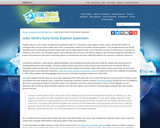
This article sets an historic context for Jules Verne's novel Captain Hatteras (1866), and presents an overview of day-to-day survival on the typical 19th century arctic voyage portrayed in this fictional account.
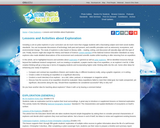
This article includes integrated lessons, activities, and ideas for teaching about exploration and polar explorers in the elementary classroom.
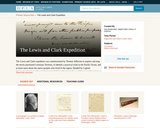
This collection uses primary sources to explore the Lewis and Clark Expedition. Digital Public Library of America Primary Source Sets are designed to help students develop their critical thinking skills and draw diverse material from libraries, archives, and museums across the United States. Each set includes an overview, ten to fifteen primary sources, links to related resources, and a teaching guide. These sets were created and reviewed by the teachers on the DPLA's Education Advisory Committee.
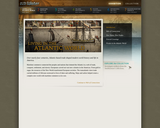
The web of maritime connections between Western Europe, western and central Africa, and the Americas that made up the Atlantic world is the focus of this section of "On the Water: Stories from Maritime America", an online exhibition from the Smithsonian's National Museum of American History. Students will learn how Atlantic-based trade shaped modern world history and life in America. Topics covered are the tobacco and sugar trades, the Middle Passage and the transatlantic slave trade, and the piracy that plagued the Caribbean Sea and North American coast during this period.
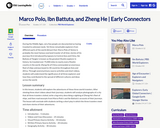
In this lesson, students will explore the adventures of these three world travelers. After viewing three short videos about their journeys, students will analyze photographs of a city that all three travelers visited, write a log entry describing a sighting of Zheng He’s fleet of ships, and then read excerpts from Marco Polo’s and Ibn Battuta’s accounts of their journeys. The lesson will conclude with students writing a short play in which the three travelers meet and share stories of their adventures.
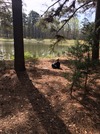
In this virtual resource, students will engage their senses to observe birds in their schoolyard. They will compare different types of birds by color and shape, and evaluate their schoolyard for birds' basic needs.
The wakelet site features videos demonstrating hands-on activities for students to complete at school in small, socially distanced settings. Activities may also be adapted for at-home learning. Most field trips incorporate an outdoor component, acknowledging the need to balance screen time with green time to support mental health. Tips for taking your students outside can be found here: https://education.eol.org/cnc_materials/TipsForTeachingOutside.pdf
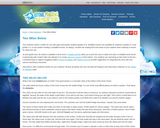
This article describes robots that are helping scientists explore the Gakkel Ridge deep below the Arctic Ocean and links to informational text about them. Versions are available for students in grades K-1, 2-3 and 4-5. Related science and literacy activities are included.
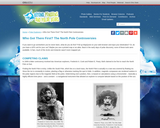
This article discusses the controversies surrounding North Pole exploration that began in the early 1900s and continue to be debated today.

The Crusades began in 1096 and lasted until 1291. During two centuries of atrocious fighting between Christians and Muslims to control the Holy Land, the end result was the establishment of a bitter hatred between the two religions. From an exploration standpoint, however, the result was not as dismal. Crusading in the areas of northern and eastern Europe led to the expansion of some kingdoms and the creation of new political units. While religious fighting was occurring, traders moved into the area and started to profit economically from use of the land. When the Catholic Crusaders returned from the Middle East in the 12th and 13th Centuries, they brought back with them tales of new lands and peoples as well as cloth such as silk and foods such as sugar—all of which they had never experienced before.